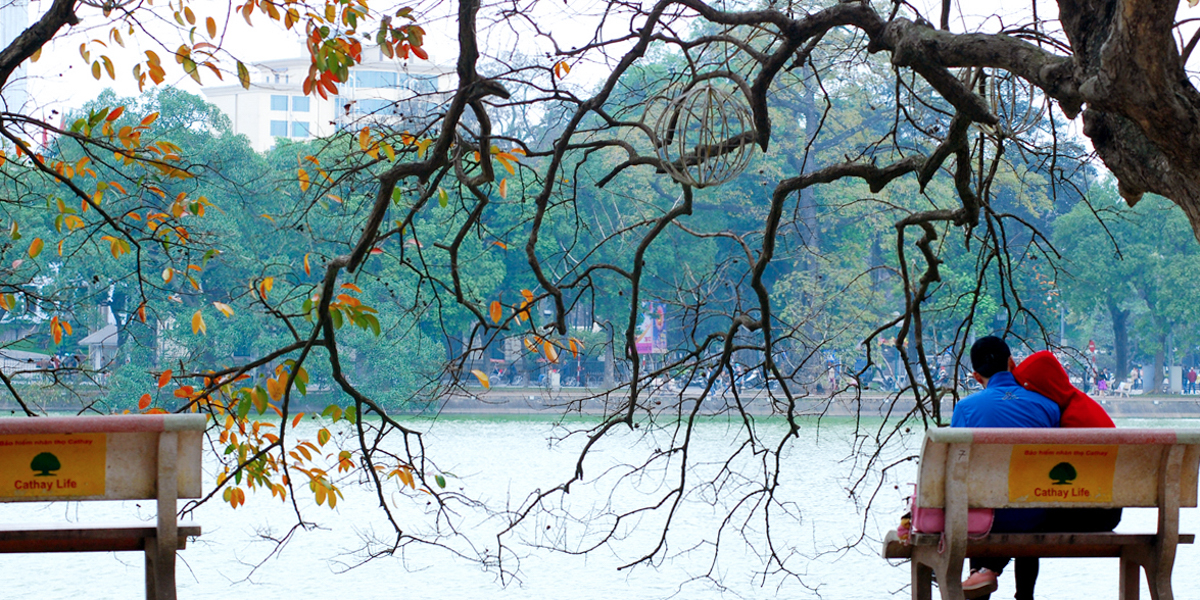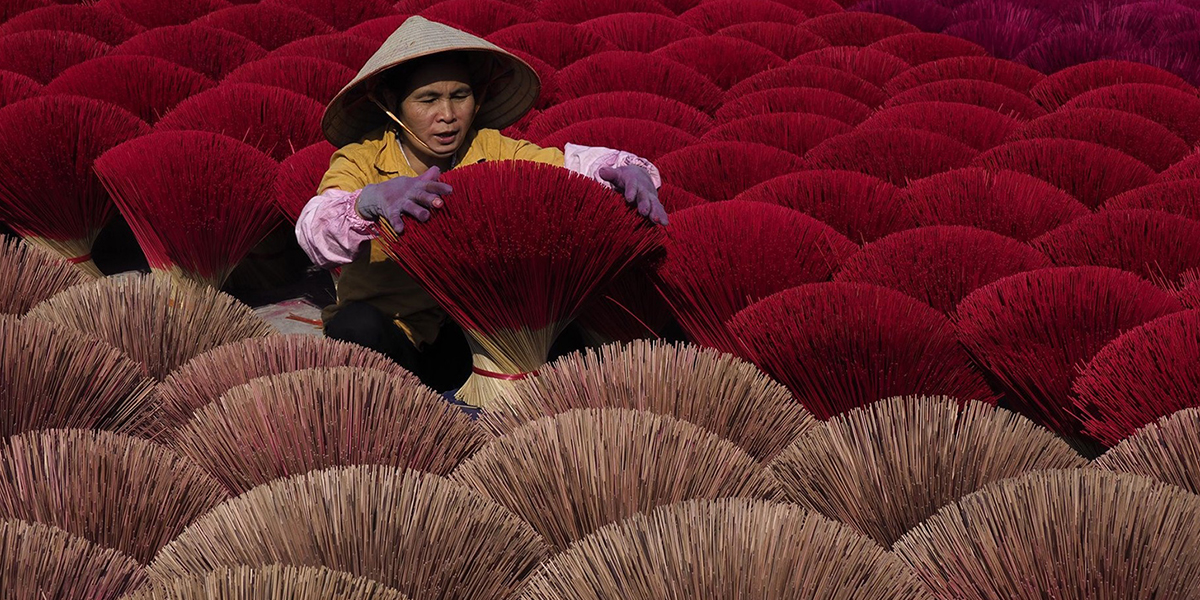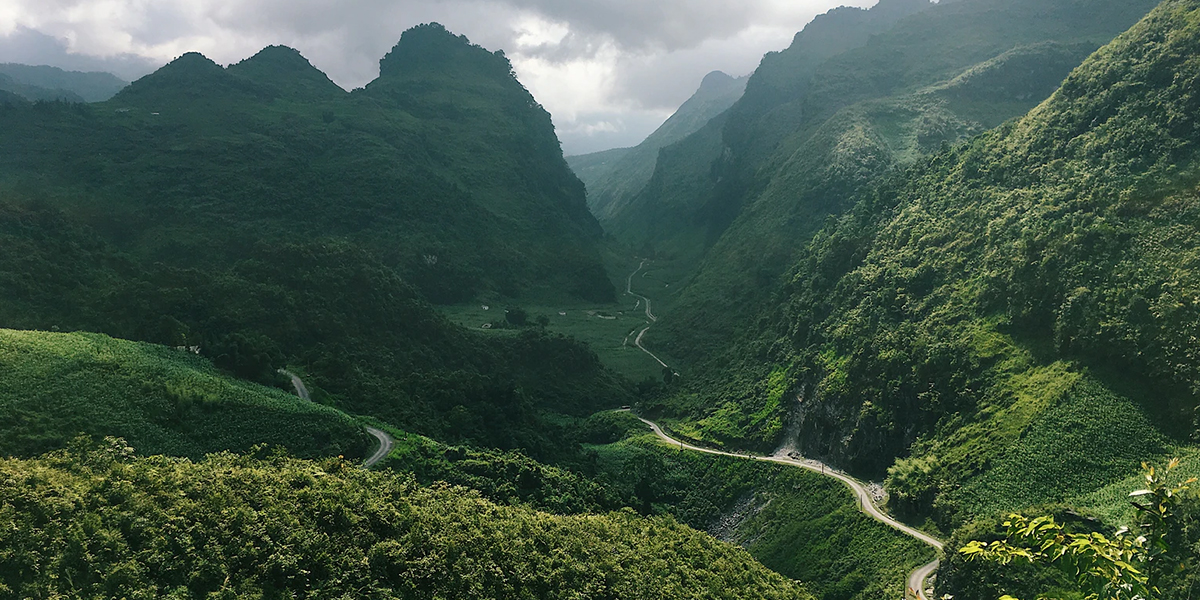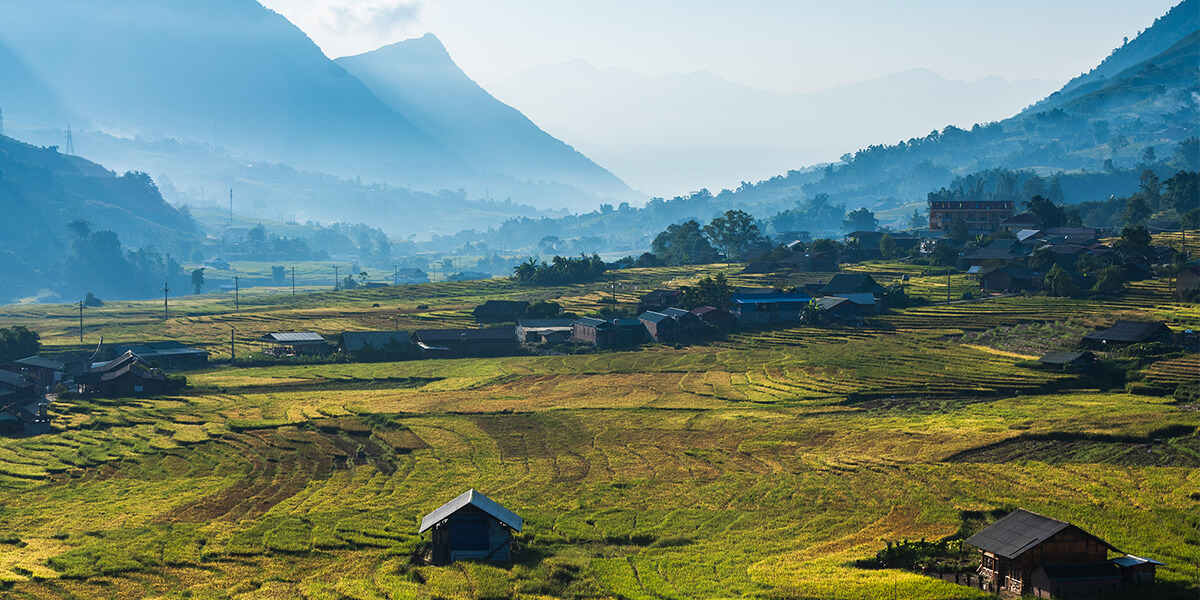The S-shaped of Vietnam is always diverse in every aspect, and the rainy season is not an exception. Due to the difference in latitude and terrain, the rainy season in different parts of the country doesn’t look the same. Traveling during the rainy season in Vietnam therefore, is sure to bring you a lot of memorable experiences.
I - Is there a Vietnam rainy season in the north?
In fact, the northern part of Vietnam is located at a higher latitude than the southern, so it is sharply influenced by the northeast monsoon. Characterized by humid subtropical climate, this region has 4 seasons of which the winter is cold and the summer is hot, the autumn is cool and the spring is warm. There is no specific rainy season in the north. The rains are scattered and change in frequency and nature according to different seasons.
1 - Summer rain - the beginning of the north Vietnam rainy season
Summer (May to August) in the North of Vietnam is hot and sultry, sometimes the temperature can rise up to 42oC. The heat causes the water in the rivers and the soil to vaporize quickly, therefore, pouring rains frequently occur, especially in the late afternoon. The characteristics of the rainy season in Vietnam in the north are sudden, torrential, quickly come, quickly go. The signal is thousands of masses of dark clouds covering the sky, thunder rumbling, wind howling. The rains often accompany thunder and lightning. The remarkable amount of Vietnam rainfall (approximately 400 - 800mm on average) is necessary for agriculture.

North Vietnam rainy season - Source: Hoàng Nam
Although it can obstruct daily activities, the Northern people expect and appreciate them a lot because they are like showers cooling down the burning earth, refreshing plants and crops. If you travel during these months, the expense is very comfortable since it is still off-season. However, you should make a note that from May to June, the sun is fierce and rains are ample accordingly, it is not suitable for trekking or mountain climbing at all.
Traveling during the Vietnam rainy season in the north, you should consider having a holiday at beaches such as Ha Long bay, Cat Ba island or in places with abundant trees like national parks of Cat Ba, Cuc Phuong or Pu Luong wildlife reserve.
July and August are the peak of the rainy season in Vietnam’s northern provinces, the sunlight is less intense but there is a likelihood of tropical storms because this has been long known as the storm season in the North. Hence, beaches and marine tourism are no longer advisable. The priority should be shifted to waterfalls, medium mountains, and big cities, of which prime examples are Ban Gioc waterfall and the complex of tourist sites in Ninh Binh province.
2 - Autumn the main north Vietnam rainy season
When Autumn (September to October) comes, the atmosphere is much cooler and pleasant. Downpours still occur but with reduced frequency and amount (averagely 150 - 300 mm). The closer it comes to the end, the less rainy the weather is. Scarcely do people come across phenomena like thunder and lightning. Autumn is also the most beautiful time of north Vietnam travel. From the end of September, you can start your trip to almost every attraction across this area.

Source: baoquangninh
At the end of the rainy season in Vietnam in autumn, the best places for visiting are the yellow rice terraced fields in the north, of which Hoang Su Phi (Ha Giang province) or Mu Cang Chai district (Yen Bai province) are highly recommended. Besides, experiential tourism in Sapa (Lao Cai province) or Ba Be lake (Bac Kan province) is not a bad idea.
3 - Winter - Not the northern Vietnam rainy season
Winter (November to January next year) is probably the time with lowest precipitation in the North (only about 60mm). Due to the active operation of the Northeast monsoon, the weather is generally cold and dry. From November to December, it is hard to witness rain in Vietnam, till January, some drizzles come sometimes which can’t make you get wet but enhance the freezing. The cold & dry of winter is best for trekking, climbing mountains in Ha Giang province and Sapa town (Lao Cai province). The nature at these mountainous places is so wild and majestic with a mist blanket covering around the neck of the rocks, which provokes the curiosity and sense of adventure of ambitious travelers. The cold of the weather is a great support since it reduces the speed of dehydration of your body.
4 - Spring - Not really the northern Vietnam rainy season
Unlike that in winter, rain in spring (February to April) comes sometimes, gets a bit heavier and long-lasting. The rains can last for days or weeks parallel with the cold. Due to the rains, the humidity in the air is higher, mugginess sometimes happens. However, this weather condition has no negative effect on your travel itinerary.
The beginning months in the rainy season in Vietnam’s spring are a perfect time to explore the native culture of the Northeast mountainous area, typically Moc Chau, Lao Cai, Ha Giang since this is the festival season there. Each ethnic group of people dwelling in that land has traditional festivals of their own, most of which are held after the Vietnamese New Year. Visiting the area, not only can you indulge in a bustling space but you can contemplate the poetic scenery created by peach blossoms, plum blossoms,... .
II - Vietnam rainy season in the Central Vietnam
1 - Features of the rainy season in the Central Vietnam

Source: Phan Thành Sơn
Central Vietnam is the region with the most complicated climate which varies according to topography. The difference can be seen in 3 major areas: the North Central (Thanh Hoa province to Thua Thien-Hue province), the South Central (Da Nang city to Binh Thuan province) and the Central Highland (Kon Tum, Gia Lai, Dak Lak, Dak Nong and Lam Dong province).
The Vietnam rainy season months in the North Central starting from August to December with the concentration in August, September and October. The annual average rainfall is around 1,400mm. An amazing fact about this area is that the rainy time doesn’t coincide with the hot one.
The rainy season in Vietnam’s South Central on the other hand falls in September to December with an annual rainfall reaching up to 1,200 - 2,000 mm on average. The rains come at the same time as the activeness of storms, tropical depression and the Northeast monsoon, therefore, this is also the flood season of the year. May to October is the time of rains in the Central Highlands. During this period, it rains day by day and the amount of rainfall in these months can account for 90% that of the whole year.
2 - Note for visitors when traveling in Vietnam rainy season months
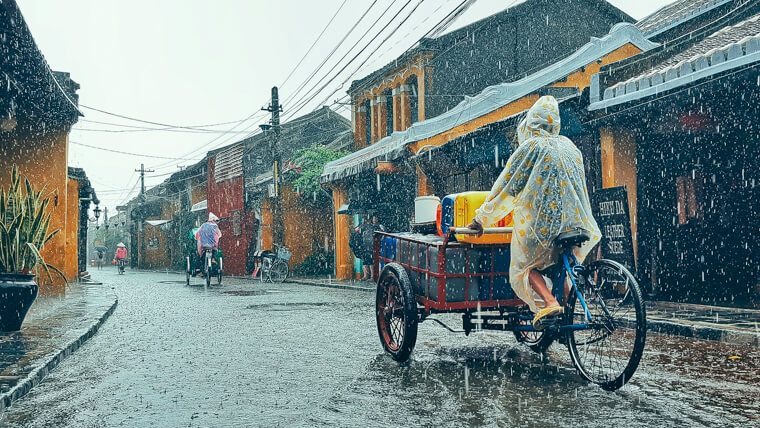
Source: vnexpress
If you are planning for a trip to a particular destination in the Central, the sincere advice is to avoid months from September to November since it is the flood season. Floods in the Central provinces of Vietnam are notorious for their terribleness. Amongst terrible floods in Vietnam reported in the history, a majority of which were in this area. Despite extreme weather, don’t rush into a conclusion that there is no destination in the Central for you to visit in the rainy season. In fact, there are places seemingly more picturesque under the rain. They are Hue city, Hoi An ancient town, and Da Lat city, those with traditional, historical beauty or serene nature.
III - When is Vietnam rainy season in the South
1 - Characteristics of rainy seasons in Southern Vietnam
Southern Vietnam has a sub equatorial climate with 2 distinct seasons: the dry season and the rainy one like the Central. The annual average rainfall of the area is considered high, from 1,300 - 2,000mm. The rainy season in south Vietnam lasts from May to November. However, you don’t have to be worried as the rains all come quickly and go in the same way.
With flat terrain, the weather here is moderate and stable with few records of natural disasters. However, there is an aching problem facing the land for years, which is high tide. This phenomenon regularly happens in the early morning and late afternoon. Should the rain pours down right at this time, it can easily give rise to a flood, causing too much disturbance on your schedule.
2 - Interesting places to visit in the south Vietnam rainy season

Source: vietravel
The specialties of the South are floating markets and orchards in the Mekong Delta river. The floating markets in Vietnam are the method of gathering for good exchange that the local people have created to adapt to the nature of topography and weather. From early morning, dozens of boats from rivers gather at the confluence to trade. Being in a floating market, not only can you buy special products but also understand more about the lifestyle and customs of the native folks. Some famous floating markets to visit in the south Vietnam rainy season are Cai Rang, Nga Nam, Cai Be,...
The rising water is an ideal occasion to visit laden orchards such as My Khanh orchard (Can Tho city), Cai Be orchard (Tien Giang province), Cai Mon orchard (Ben Tre province) because it is very convenient for traveling by boat. Moreover, the fruits are ripe massively at this time, hence you will have a chance to enjoy a diversity of types.
Rain is popularly seen as an interference to tourism activities. However, the Vietnam rainy season varies in nature depending on the time and location. And a special thing is that there are a lot of destinations which are potential for you to visit on wet days. Therefore, do not get cold feet but be confident to take a trip to Vietnam even if it is in the middle of rainy months.







.jpg) — Ha Bich
— Ha Bich

